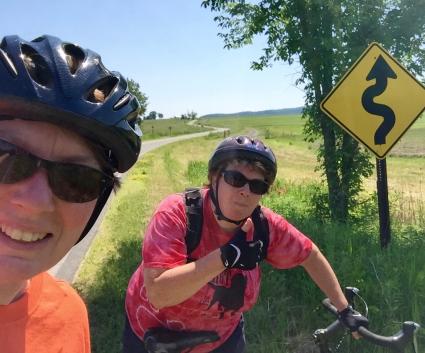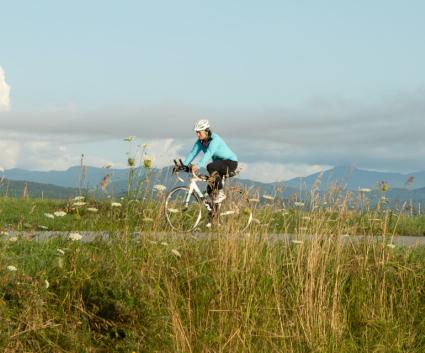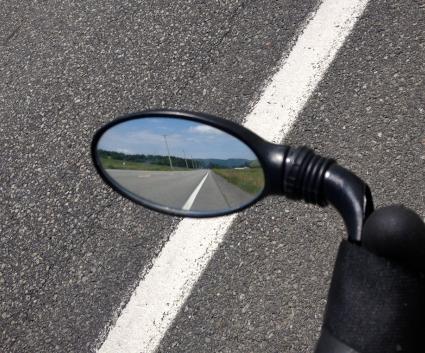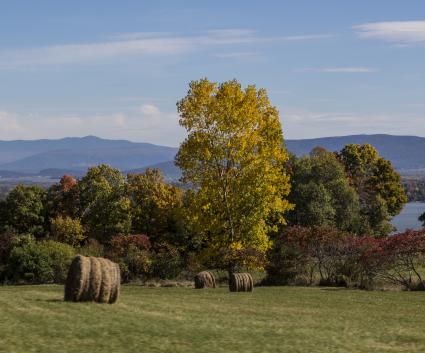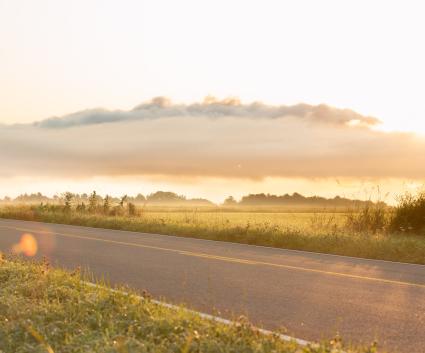Crown Point, N.Y. — A public meeting will be held to present new traffic restrictions for the Lake Champlain Bridge at 10 a.m. on April 15 at the Lake Champlain Visitors Center in Crown Point, N.Y.
The new regulations are being put into place in order to facilitate a safer flow of traffic in response to an overwhelming increase in cycling activity in the Lake Champlain region.

The bridge, which spans between Crown Point, New York and West Addison, Vermont, opened in 2011. It replaced the original, which was built in 1929 and demolished in 2009 due to structural issues, and is maintained by the State of New York.
The new bridge, unlike its predecessor, incorporated both pedestrian walkways and bike lanes in both directions, in addition to vehicular and tractor lanes. "We assumed that these modifications would be sufficient, but we vastly underestimated the appeal of the region and the structure itself to recreational cyclists,” said NYS Department of Transportation (NYSDOT) Resident Engineer Ike Arteur.

“The sheer volume of bicycles that cross that bridge every day is amazing to see,” said Dexter Smalls, who welcomes travelers at the Lake Champlain Visitors Center located at the foot of the bridge in New York. “There are times when it does seem like the cars should just pull over and wait.”
The new regulations are set to go into effect at precisely midnight on Aug. 15, 2016. The bridge will transition from accommodating multi-modal means of transport to exclusively accommodating bicycles, in both directions.

“This unprecedented decision is based primarily on safety, of course, but we know that the resulting positive economic impact will benefit residents and businesses on both sides of the lake,” said Jeff Smith from New York State Governor Andrew Cuomo’s office. “The explosion of interest in bicycling has already spurred private investment in the region, and to the extent that the State can support that momentum, we will.”
Tourism is undoubtedly one of the most important industries in the region, and road cycling enthusiasts represent a critical demographic of visitors, especially to the Adirondack coast of New York, and Vermont’s western border. According to data compiled by the Regional Office of Sustainable Tourism, outdoor recreational activities remain the primary draw for over 76 percent of visitors to the region, with cycling placing in the top 5 of those outdoor activities.
Though the boom in cycling might appear to have happened overnight, it has actually been growing consistently since the early 1990s. Lake Champlain Bikeways Board Director Louie Breseet has been part of the two-wheeled trend since the organization’s beginnings. “Lake Champlain Bikeways has identified bicycle-friendly accommodations, attractions and historic sites on the main glorious, scenic route that circumnavigates all of Lake Champlain, through New York, Vermont and Quebec, and we’ve been promoting it since 1992,” Breseet said. “We’re pleased to hear about the new bridge designation — it is a huge pedal forward for cycling in the region!”

The bridge transition date was selected specifically in mid-August in order to have the new bicycle-friendly connection in place prior to a big cycling event that will occur that month. Cycle Adirondacks, a fundraising event for the Wildlife Conservation Society, will ride through the area from Aug. 20 to 27, exposing hundreds of cyclists to the region’s spectacular bicycling landscape.
Cycle Adirondacks spokesman Doug Handy is supportive of the plan. “We know that the line painting, new signage, armed security and vacuuming any bike-unfriendly debris from the bridge surface involved with this transition is quite an undertaking,” said Handy. “We’re extremely grateful that it can be completed before our group reaches this part of the gorgeous Lake Champlain Region in August.”
Some local residents have complained about the plan following the initial announcement, citing the inconvenience that occurred while the bridge was under construction. “These pedal pushers are forgetting how terrible it was for us while the bridge was under construction. We had to drive about a million extra miles with a million extra gallons of gas just to get to work each day,” stated Dana Champery, a Vermont resident who works on the New York side of the lake. “Now we’ll have to do that again, and I just bought a bigger SUV.”
“I realize it’s a healthy sport and all, and I see all of those bikers out there every day so it must be popular, but it seems like the government is trying to force us all to ride bicycles,” said Trina Write, of West Addison, Vermont. “Not everyone is a super athlete, you know.”
In contrast, some local residents are in favor of the new designation. Shelly Leafwick, who manages the Edgemont B&B in Moriah, New York, which caters to bicyclists, is looking forward to the change. “We’re thinking about adding another building to accommodate lodging guests, and we’re certainly going to add more bike racks and water bottle filling stations,” said Leafwick. “This bike bridge is the best thing to happen to Lake Champlain since Champ moved in.”

Officials also plan to approach the Lake Champlain Transportation company, which operates the Lake Champlain Ferries that cross the lake at three different locations. "We think that designating the centrally located Essex/Charlotte boat as a bike-only ferry will also help to alleviate issues for the cycling community,” added NYSDOT’s Arteur. “We understand how inconvenient it is for cyclists to have to wait in long lines behind tractor trailer trucks and other motorized vehicles that take up valuable bicycle space on the ferries.”
When questioned about the seasonality of cycling and whether this was a year-round restriction, NYSDOT representatives were firm. "While the bulk of the bicycle traffic occurs from April through October, we are seeing an increase in winter riders, so yes, this is a year-round restriction," said Arteur. "Though the use of studded tires, as is the case with motor vehicles, is limited to the period between Oct. 15 and May 1."
The public meeting will include dissemination of maps that detail the best routes to utilize once the bridge is no longer accessible to motorized vehicles. Motorized vehicle operators of all IQ levels are discouraged from driving across the frozen lake during winter. A decision about retaining the pedestrian walkways on the bridge is forthcoming. Residents are encouraged to contact the Lake Champlain Visitors Center with questions regarding the public meeting on April 15.*
###
*The preceding story is fabricated in celebration of April Fools day, popular for the commission of good-humored practical jokes of varying sophistication.






